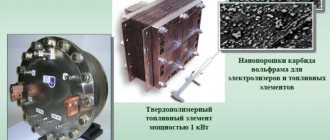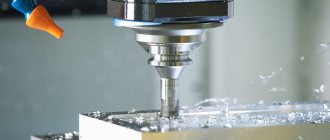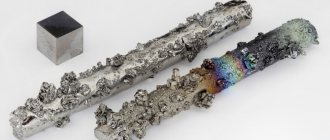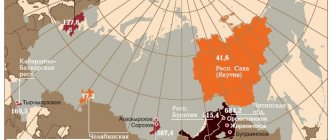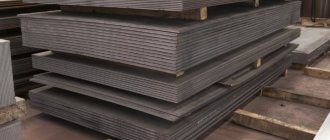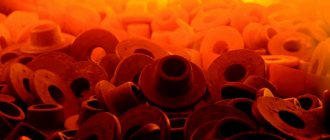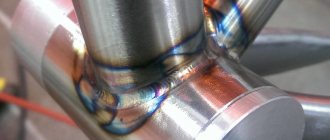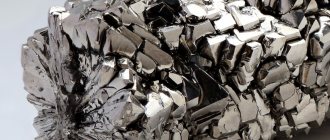Rings made of tungsten carbide, titanium, thisten and steel have won an impressive audience of fans. You probably already wear one of these yourself. Or you are in the process of making a choice, which is hindered by numerous questions. Is it true that a tungsten ring is scratch-resistant? Is it possible to reduce the size of a titanium ring? How is steel superior to gold? Which ring is stronger and which is more expensive? We give comprehensive answers and reveal the main advantages of rings made of technological materials.
The described features apply to rings without decorative coatings, colored coatings and inserts.
Hardness and scratch resistance
To find out which ring is easier to scratch, you can rank the hardness of tungsten, titanium, steel and thissten on the ten-point Mohs hardness scale. The higher the numerical coefficient, the harder the metal is, and the better it is protected from deformation and scratches.
Hardness coefficient:
- Tungsten carbide - 8.5-9
- Tisten - 7
- Titan - 6
- Steel - 4-4.5
Thisten and titanium rings are difficult to scratch under standard wearing conditions, even if they are rarely removed. And if surface scratches do appear over time, the defects can be easily eliminated by polishing in a jewelry workshop. And even after repeated polishing procedures, the titanium or thistene ring will be the same as the day it was purchased.
If you want to eliminate scratches 100%, choose tungsten carbide. The tungsten ring is so hard that it can scratch glass, ceramic tiles, silver, and gold. And will remain unharmed. Tungsten rings can even withstand friction against asphalt, concrete or a high-quality tool steel file - testing this statement empirically convinced us of its veracity.
But let's be completely honest: it is actually possible to damage the surface of tungsten carbide. If you do this intentionally with a diamond - the hardest mineral in the world, the standard of the Mohs scale. In other situations there is nothing to worry about. Tungsten carbide rings are extremely practical. Wear them day after day and you won’t experience a single scratch or dent. The fantastic ability to maintain a new look over the years has paved the way for tungsten rings into the niche of engagement jewelry and is loved by newlyweds.
Steel rings resist the appearance of microdefects several times weaker than tungsten rings and are inferior to thistene and titanium rings. But if you add the two most popular precious metals to the hardness rating, steel will be in the middle of the list - the hardness coefficient of gold and silver is 2.5-3. That is, such products are covered with scratches twice as easily as steel rings.
Titanium-tungsten-cobalt hard alloys (TK alloys)
Alloying BK carbide alloys with titanium carbide or, better yet, TiC-WC solid solution significantly improves their oxidation resistance, hardness and heat resistance, so that such carbide alloys can be processed in materials that form continuous (draining) chips, in particular steel.
Reduced thermal conductivity and a lower tendency to weld chips when cutting steel and other materials that form continuous chips also have a beneficial effect. The physical and mechanical properties of hard alloys with different titanium carbide contents are given in Table. 110 and are characterized by spatial Ballhausen diagrams shown in Fig. 169 and 170. Everything that was said above regarding the BK alloys about the influence of physicochemical and technological factors on their properties equally applies to TK hard alloys.
Specific gravity
. Due to the significantly lower density of titanium carbide compared to tungsten carbide (15.7 and 4.9 g/cm3, respectively), the specific gravity of TK hard alloys is lower than BK hard alloys. With increasing titanium carbide content, the specific gravity decreases all the time (Fig. 171). Since titanium carbide (to a lesser extent TiC-WC solid solution) contains an admixture of titanium oxide or nitride, which, depending on their amount, creates typical macro- or microporosity, the relative density of a hard alloy of this kind is a criterion not only for the completeness of sintering, but also purity of the alloy.
TK carbide is not as sensitive to burnout, which reduces density, as was observed with BK carbide, as measured by shrinkage.
The relatively low specific gravity of alloys with a high content of titanium carbide is important when using such materials for structures subject to centrifugal forces.
Hardness.
With increasing titanium carbide additive, the hardness of tungsten-cobalt hard alloys increases. Increasing the cobalt content again reduces the hardness. The corresponding data is shown in Fig. 170 and 172. When constructing the spatial diagram (Fig. 170), of course, various factors that may play a role in manufacturing (raw materials, their purity, high dispersity, formation of solid solutions, sintering conditions, grain sizes, etc.) were not taken into account. .
The macrohardness of TK hard alloys depends on the microhardness of the WC-TiC solid solution. Ammann and Hinnuber determined the dependence of microhardness on titanium carbide content in the presence of 6% Co.
WC-TiC-Co based alloys are characterized by a significant increase in hot hardness as the tungsten carbide content decreases. The superiority of these alloys compared to high-speed steel is even more pronounced than that of BK carbide alloys (see Fig. 173).
Flexural strength.
The flexural strength of WC-TiC-Co hard alloys decreases continuously with increasing titanium carbide content (Fig. 172). This increase in brittleness can be eliminated to some extent by increasing the cobalt content. With excessive sintering, there is, though not as much as with BK hard alloys, but still a pronounced drop in bending strength. Precipitation of graphite, residual pores, and impurities of oxides and nitrides cause a decrease in strength.
Compressive strength.
The compressive strength of WC-TiC-Co hard alloys decreases with increasing titanium carbide content (Fig. 172). Similar to BK carbide alloys, TK carbide alloys are characterized by exceptionally high compressive strength at elevated temperatures (see Table 103).
Impact strength
. The following values of the impact work were established on samples of square cross-section (about 16 mm) without a notch made of WC-TiC-Co hard alloy:
Alloy 79% WC, 15% TiC and 6% Co……. 0.056 by whom
Alloy 77% WC1 15% TiC and 8% Co……. 0.074 by whom.
Heat resistance and long lasting strength.
The heat resistance of hard alloys containing titanium carbide is of great importance not only when using these materials for cutting or other mechanical processing (for turning tools for hot turning, dies for hot pressing, die holders for pressing, etc.), but also especially in the manufacture of heat-resistant details.
Long-term strength at 900° was determined to be 10 kg/mm2 for the hard alloy 88% WC, 5% TiC, 7% Co and 15 kg/mm2 for the alloy 78% WC, 16% TiC, 6% Co.
Coefficient of thermal expansion.
With increasing titanium carbide content, the coefficient of thermal expansion slightly increases. However, it is always significantly lower than the expansion coefficient of high-speed steel. The value of the coefficient of thermal expansion is of great importance when soldering carbide plates.
Specific heat.
The specific heat capacity of WC-TiC-Co hard alloys increases slightly with increasing titanium carbide content (Table 111).
Electrical conductivity.
The electrical conductivity of WC-Co hard alloys deteriorates with increasing titanium carbide content (see Table 112).
Strength under variable bending.
The alternating bending strength of a carbide alloy 78% WC, 16% TiC and 6% Co is + 38 kg/mm2 with a 2*10v6 cycle compared to +40 kg/mm2 for steel (ob = 70 kg/mm2).
Elastic modulus.
The elastic modulus of WC-TiC-Co hard alloys is slightly lower than that of tungsten-cobalt hard alloys. The elastic modulus decreases with increasing titanium carbide content (see Fig. 172).
Thermal conductivity.
The thermal conductivity of WC-TiC-Co hard alloys is significantly lower than the thermal conductivity of BK alloys, since titanium carbide conducts heat worse than tungsten carbide. As the titanium carbide content increases, the thermal conductivity deteriorates continuously. When using TK carbide alloys containing 25-45% titanium carbide (usually used for finishing work), it is necessary to avoid overheating during sharpening and ensure good heat dissipation, otherwise cracks may occur.
Compared to high-speed steel with a thermal conductivity of about 0.06 cal/cm*deg*sec, various WC-TiC-Co-based hard alloys are characterized by the thermal conductivity values given in Table. 112.
Magnetic properties.
In table 113 shows the values of magnetic saturation and coercive force for TK hard alloys. Titanium carbide is non-ferromagnetic and therefore reduces magnetic saturation. This can be used for quality control and sorting.
Structure.
Previously, the components of the structure of WC-TiC-Co hard alloys were examined in detail. This is basically more or less strongly recrystallized tungsten carbide, containing in this case a certain amount of dissolved titanium carbide (phase a1 and a2), a solid solution of titanium and tungsten carbides (b-phase), inclusions of titanium carbide in solid solution (b'-phase ) and a binding metal (y-phase). The greater the proportion of solid solution in the structure of a given composition, the higher the resistance when cutting carbide.
It is worth noting the numerous works on the study of the structure of TK hard alloys.
Resistant to corrosion and scale formation. The works provide data on the resistance of WC-TiC-Co alloys against the effects of sea water, acids and alkalis. As can be seen from the data in Table. 105 and 106, an alloy of 79% WC, 15% TiC and 6% Co is characterized in comparison with the VK6 alloy by better anti-corrosion resistance both at room temperature and at boiling temperature. Compared to BK carbide alloys, WC-TiC-Co alloys are significantly more resistant to scale. The oxide film, making it difficult to weld the hard alloy to the running chips, is the reason for the satisfactory behavior of such alloys when processing materials that form continuous chips.
Cutting resistance.
The cutting resistance of WC-TiC-Co carbide alloys is then reported in detail, in particular their superior performance in continuous chip cutting materials compared to pure tungsten-cobalt alloys. It goes without saying that cutting resistance is favorably influenced by high hardness, optimal density, good bending strength, a high proportion of solid solution in the total mass and all other factors that improve these properties of hard alloys.
Wear resistance.
Characteristics of wear of WC-TiC-Co alloys, in particular when cutting materials that form continuous chips, and the resulting crumbling phenomena due to welding to the running chips.
Under certain circumstances, TK hard alloys are used instead of tough BK hard alloys if, in addition to severe wear, the additional phenomenon of corrosion is observed.
Areas of use.
In table 114 presents the areas of application of WC-TiC-Co hard alloys according to literature data.
Which ring is harder to scratch?
| Tungsten rings | Tisten (titanium-tungsten) rings | Titanium rings | 316L steel rings |
| They don't scratch. | Very difficult to scratch. | In terms of resistance to scratches, they are inferior to both tungsten and thistene, but are significantly superior to 316L steel. | Over time, microscratches may appear on the surface, affecting the intensity of the ring's shine, but they can be easily eliminated by polishing. |
Is it possible to change the size
The size of a tungsten, titanium or thistene ring cannot be reduced or increased. The equipment of traditional jewelry workshops is not designed to process such hard metals.
We attribute a similar property to 316L steel. If you don’t believe me, try to find a craftsman who will resize the steel ring. And if you find a specialist with the appropriate equipment, the cost of the service is unlikely to please you. The price tag will be comparable to resizing a gold ring and will likely exceed the original cost of your ring.
| Tungsten rings | Titanium rings | Tisten rings | 316L steel rings |
| Can't resize | |||
A profitable alternative when buying rings online is to choose a store that provides a free exchange service. The opportunity to exchange a ring of the wrong size by mail or when visiting a showroom in our store is available within 30 days after receiving the order. To reduce the likelihood of making an erroneous choice, we recommend that you familiarize yourself with methods for determining ring size at home before purchasing online.
Russian industry
One of the leading enterprises engaged in the field of production and scientific development is the Kirovograd Hard Alloy Plant. KZTS has extensive in-house experience in introducing innovative technologies into production. This allows it to occupy a leading position in the Russian industrial market. The company specializes in the production of sintered carbide tools and products, metal powders. Production began in January 1942. At the end of the 90s, the enterprise was modernized. Over the past few years, the Kirovograd Hard Alloy Plant has been focusing its activities on the production of improved multifaceted replaceable inserts with wear-resistant multilayer coatings. The company is also developing new tungsten-free compounds.
Differences in weight
Among our four, the ones with the lightest weight are titanium rings. An option for those who prefer the lightest possible jewelry or are not used to wearing a ring and have decided to buy one for the first time. Steel rings are 1-1.5 times heavier than titanium rings, but lighter than Tisten models.
Tungsten rings are comparable in weight to products made from gold and platinum, which are included in the ten heaviest metals in the world. On average 4 times heavier than titanium models.
| Tungsten Carbide Rings | Titanium rings | Tisten (titanium-tungsten) rings | 316L steel rings |
| They are distinguished by significant weight and feel on the hand like gold or platinum rings. | The lightest, you can hardly feel it on your hand. | Lighter than tungsten, heavier than titanium and steel rings. | Lighter than tungsten and Tisten rings, heavier than titanium rings. |
Cast connections
Carbide tools produced by this method are highly resistant to abrasion by the workpiece material and chips. They do not lose their characteristics at heating temperatures from 750 to 1100 degrees. It has been established that products made by melting or casting with the addition of a kilogram of tungsten can process five times more material than objects made of high-speed steel with the same W content. One of the disadvantages of such compounds is their fragility. As the proportion of cobalt in the composition decreases, it increases. The speed of carbide cutters is 3-4 times higher than that of steel.
Profitable price
Affordable price is an important advantage of all four alloys. When we say “affordable,” we mean a comparison with the high price level of precious metals. The owners of the most budget price tag are steel rings. Models made of tungsten carbide will cost more, which is justified by the difficulties in processing it, which increases the level of production costs. It is worth noting that fans of tungsten rings living in the CIS countries are noticeably lucky. In US stores, prices for similar models are much higher.
| Tungsten ring | Titanium ring | Thisten ring | 316L steel ring |
| Most expensive option | Cheaper than tungsten, but more expensive than steel rings | Cheaper than tungsten, but more expensive than steel rings | The most affordable option |
Among our four, titanium and thistene rings are in the middle price category. Cheaper than tungsten, but not significantly.
Color change over time
If the ring begins to darken or show signs of rust, it is a piece of mediocre quality jewelry. Rings made of tungsten, titanium, thisten and stainless steel (without color coating) do not change the original shade, are not afraid of exposure to ultraviolet radiation, water (even sea water), are resistant to corrosion, and do not oxidize when interacting with the skin (unlike some silver jewelry) .
| Tungsten ring | Titanium ring | Thisten ring | 316L steel ring |
| Do not change color, do not darken, do not fade, do not rust. | |||
A change in the color of the tungsten ring, as well as models made of thisten or titanium, is a sign of an increased content of impurities in the metal alloy. As well as the darkening of the steel ring - the fact that its composition does not correspond to the proven grade of 316L steel.
Which ring can be engraved on?
You can engrave an inscription on a ring made of any metal - steel, titanium, thisten and even tungsten carbide. In most cases, inscriptions on the hardest materials that are difficult to machine are taken on by salons that offer laser engraving services on stainless steel.
| Tungsten rings | Titanium rings | Tisten rings | 316L steel rings |
| All rings can be laser engraved. | |||
Powdered materials
They are presented in two groups: containing and not containing tungsten. In the first case, the hard alloy is presented in the form of a mixture of technical powdered W and ferrotungsten with carburizing components. It was manufactured in the USSR. This hard alloy is called “wokar”. The material manufacturing process is as follows:
- High-percentage ferrotungsten and technical powdered W are mixed with ground coke, soot and other similar components.
- The resulting mass is mixed with sugar molasses or resin into a thick paste.
- Briquettes are pressed from the mixture and lightly fired. This is necessary to remove volatile compounds.
- After firing, the briquettes are ground and sifted.
The finished material thus has the appearance of fragile black grains. Their size is 1-3 mm. A distinctive feature of such materials is their high bulk weight.
Hypoallergenic properties
Almost any metal jewelry can cause an allergy. It all depends on the composition of the alloy and individual physiology. The base alloys (tungsten, titanium, gold, etc.) are mostly hypoallergenic. The culprits of negative reactions are impurities and additives. They are present in a large number of jewelry alloys made of platinum, silver, gold, as well as in tungsten carbide, thissten, 316L steel and even titanium (with the exception of ASTM-F136 titanium, from which jewelry for primary piercings and medical implants are created).
If you have already encountered an allergy to nickel, chromium, cobalt or other additive metals, you cannot exclude the possibility of its reoccurrence. You will have to approach the choice of jewelry as carefully as possible and, perhaps, some types of modern jewelry will be prohibited for you. In other cases, rings made from alternative metals have proven themselves to be excellent. Customer complaints about negative reactions related to 316L steel, tungsten, titanium and thissten models are rare in our store.
Sintered materials
They involve a metal-like compound bonded by an alloy or metal. As a rule, carbide (including complex ones) of titanium or tungsten, as well as tantalum, titanium carbonide, is used as a base. Borides are used less frequently in production. The matrix for holding the grains of the material is a binder - an alloy or metal. As a rule, it is cobalt. It is a carbon neutral element. Cobalt does not form its own carbides and does not destroy others. Less commonly used in combination is nickel and its compound with molybdenum.
About other features
The increased hardness of tungsten carbide and thissten gives the rings enviable advantages, but makes them fragile. Not in the sense that they, like crystal, break into hundreds of small fragments. But if there is a strong impact with a heavy object or a fall from a height (on asphalt, ceramic tiles, concrete), the ring may crack or burst, breaking into two parts. In a long chain of advantages, this is perhaps their only weak link.
Steel and titanium rings do not have this feature. If dropped, they will remain intact; the worst outcome is a few scratches.
Application
In modern industry, hard alloys are widely used. At the same time, materials are constantly being improved. The development of this manufacturing sector is carried out in two directions. First of all, the compositions of alloys are improved and their manufacturing technology is improved. In addition, innovative methods of applying compounds to products are being introduced. Carbide tools contribute to a significant increase in labor productivity. This is ensured by the high wear resistance and heat resistance of the products. Such characteristics allow working at speeds 3-5 times higher than for steel. Modern burrs, for example, have such advantages. Carbide materials manufactured using advanced technologies (electrochemical and electrophysical methods), including the use of diamond blanks, are among the most in demand in industry today.
About tungsten, titanium, thisten and coated steel rings
Colored coatings are not as durable as tungsten carbide, titanium, thysten or steel. Therefore, it is recommended to handle blue, black, gold and other colored rings more carefully, protecting them from the effects of household chemicals and other aggressive substances and proximity to hard objects. How to increase the service life of multi-colored models - read the article about the features of rings with IP and PVD coating.

